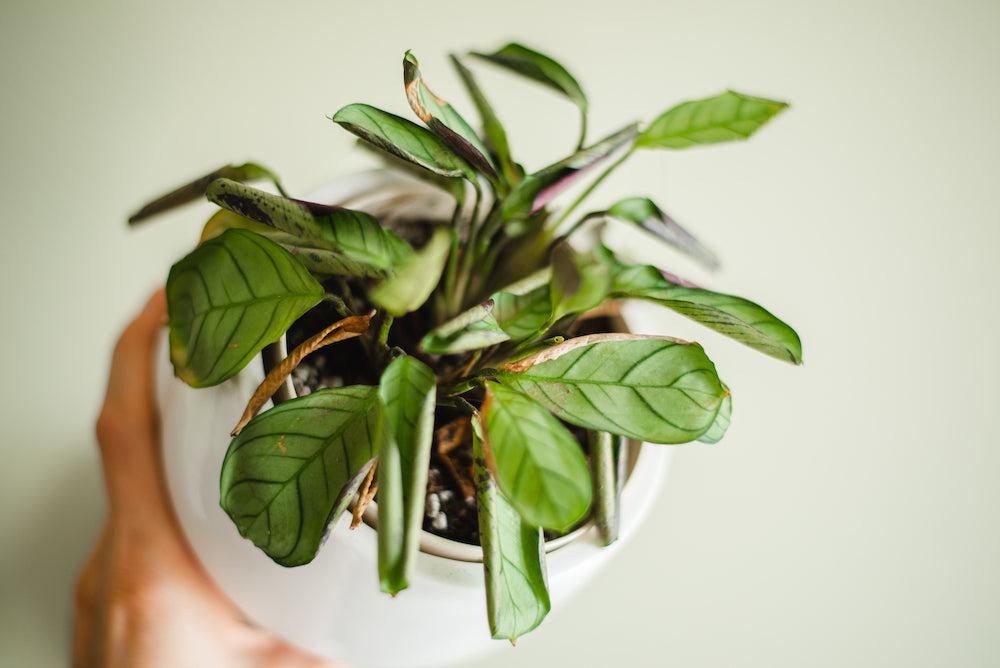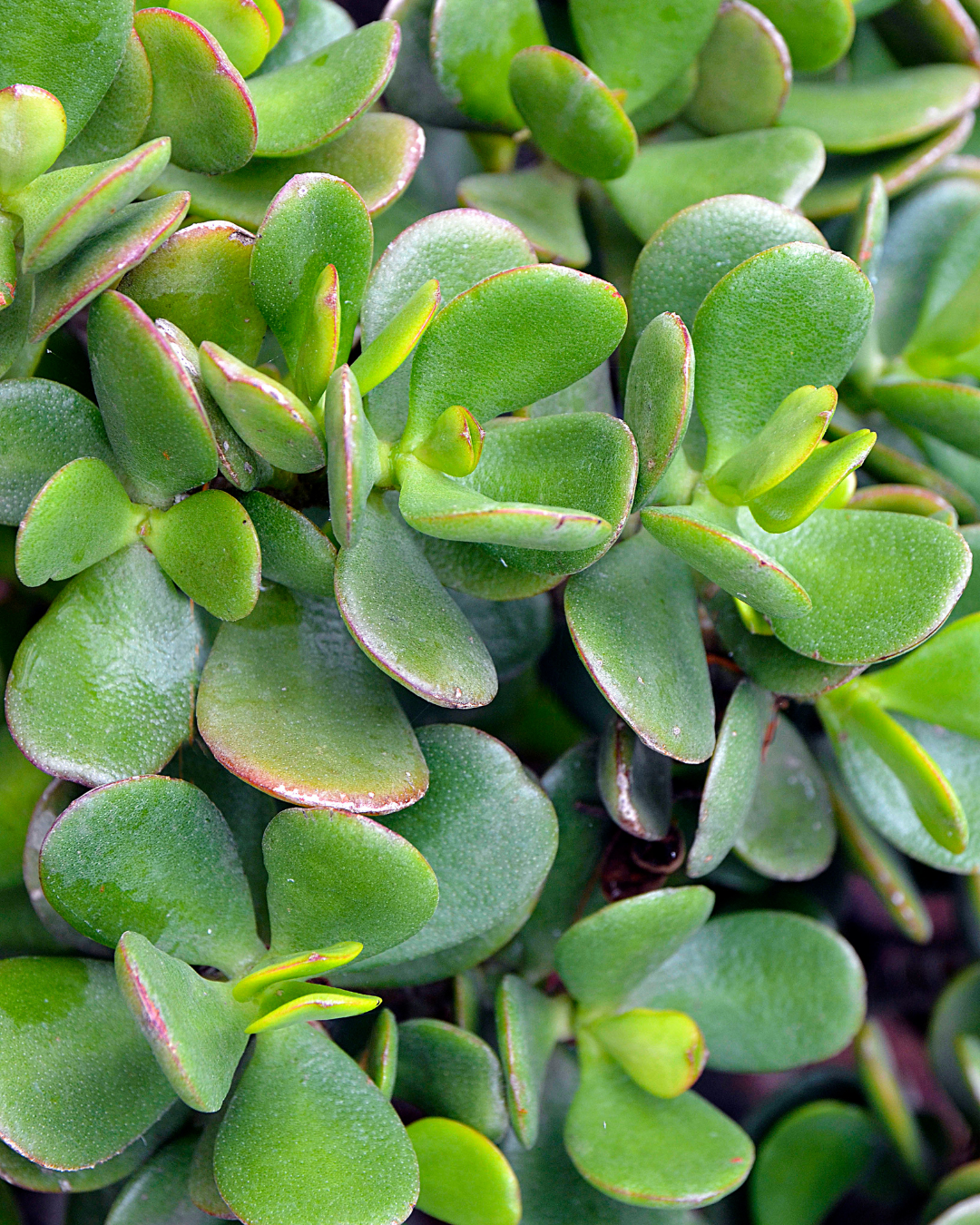House Plant Pests

House Plant Pests
Preventing Thrips and Spider Mites in your Houseplant Collection
by Tessa Cobley on Nov 08 2023
Sometimes it's not always possible to check your plants each week for pests
Thrips and spider mites love houseplants and it's best to catch them early if you want to succeed in getting rid of them. They hang out on your plants because you provide lots of warmth and light for them, which are conditions pest thrive in.
Especially when you have a large collection, but even if you only have a couple of plants, there isn't always the time to check for first signs of the little critters.
If you have signs of pest damage or just want to find out what to look for, have a look here.
Thrips and spider mire are difficult to get rid of with chemical sprays and most of us don't really want to spray poison around our homes.
How to prevent your plants from thrips and spider mite infestations
Slow release sachets are the safe, eco friendly, effective and hassle free to keep your plants from pest infestation.
Slow release sachets protect for around 6 weeks. They contain a breeding colony of mites that crawl out of a hole on the back of the sachet over the active period. They work slowly so are not so good at clearing up an infestation but are great at keeping pests at bay. Find out more here.
You can use them both at the same time too, so you can control thrips and spider mites at the same time.
What customers say about slow release sachets
ABSOLUTE BEST
"Wish I'd found out about these sooner as had to battle the worst thrips infestation and have used every method imaginable but none have been as effective as these guys! Absolutely elated, wish this was more well known than useless sprays."
FIVE STARS
Definitely works for me, have been using this product for sometime now and (touch wood) no recurrence.
Save on Thrips and Spider Mite controls
5% Off Subscriptions...So that you don't forget to replace your sachets, you can sign up to a 6 weekly subscription. You will save 5% off the sachets you receive. Shop now.
10 Free Sachets...If you order 20 or more sachets you can add another 10 (of either kind) and get those for FREE. Just add 20 or more + a set of 10 and use the code EXTRASACHETS to receive the discount. Shop now.

House Plant Pests
by Tessa Cobley on Sep 21 2023
Unfortunately pests love houseplants, it's the combination of the warmth, light and the proximity of one plant to another that creates the perfect conditions for an infestation. Some of the most common are listed below along with links to more on that pest or directly to the products for combatting that pest.
Is it Thrips?
The leaf surface turns a silver colour spotted with black spots, flowers are deformed with brown petals. The pest itself is very small and difficult to see. More on the thrips here...
How to treat Thrips
Treatment will depend on how well established the infestation is. Thrips also have different life stages and some treatments only work on the earlier stages. Amblyseius mites are our most popular Thrips control, they feed on the larvae and will also live on pollen so can offer protection against an outbreak. Nematodes control the larvae and the pulpae. Orius is the gold standard in Thrips eating, they attack all life stages of the pest. More on the treatments here...
Ready to shop? Here's a direct link to the Thrips products...
Is it Red Spider Mite?
Spider mites feed on leaf material. The leaf damage will start with mottling, new growth will be non existant or sickly. Leaves may brown and fall off.
When a plant is infested you will see a fine webbing spread across the plant. More about the pest here...
How to treat Red Spider Mite
In the first instance keep affected plants cool and wet, spider mites thrive in warm dry conditions. Use a soap based insecticide.
Amblyseius Andersoni mites are sold in slow release sachets, they work brilliantly as a preventative measure or for small outbreaks.
If the infestation has taken hold we sell Phytoseiulus persimilis mites which work fast to treat an outbreak. Here's a link to the products mentioned...
Is it Sciarid Fly (Fungus Gnats)?
This one is easy to spot and may be driving you mad! Brownish in colour & 3-4mm long they crawl and slowly fly around pots and trays generally being a nuisance. In their larval stage they are slim white maggots that can be up to 6mm long. The adults don't cause much more than a headache but the young can be devastating for young plants and new growth. Click for more about fungus gnats
How to treat fungus gnats
In the first instance you should use nematodes to control this pest, in conjunction with yellow sticky traps to get rid of the adults. If you are growing in very dry conditions or the growing material isn't suitable Hypoaspis mites are great and can provide protection for several weeks after clearing up the problem. Here's a link to these controls...
Is it Mealybug?
Little white-grey creatures which look a bit like fluffy white woodlice. They are first spotted in the joins where leaves meet stems and on the underside of leaves. You will see white, sicky wooley masses. Click for more about the pest...
How to treat Mealybug
Clean Mealybug off as soon as you see it, but be careful - it spreads very easily and you don't want to make the problem worse. In temperatures that remain above 20°C, mealybugs can be treated with Brown Australian Ladybirds, Cryptolaemus Montrouzieri which will crawl around the plant eating the mealybugs. Mealybug treatments...
Still not sure?
You may find that it isn't any of the above, for more pest identification advice head over here or contact us directly via the Contact Us page.

House Plant Pests
What is Horticultural Soap & how does it work
by Tessa Cobley on Jun 09 2021
Inside or in the garden, sprayed on or as a dip, horticultural soap is a great allrounder for reducing pest numbers on houseplants, flowers, veggies and more.🍓The word insecticide sound chemically right? Well not always. Ladybird Plantcare Soap has no nasty chemicals making it a safe choice for indoors, around pets, kids and other wildlife.🐈It's made from natural oils and kills pests on contact by gumming them up. You have complete control over what you are reducing the population of with this spray as it doesn't leave any residue. 🌷If you're spraying aphids or spider mites you are not risking the lives of bees, ladybirds or any other beneficial insects. And if you're looking to introduce live predators to finish the job off you can do almost straight away.🐞250ml of concentrate makes up 25 litres of spray, fab to have around when you spot something munching! Buy Now🌿
The Technical Bit
Instructions for use
The pure liquid soap can be applied with a sponge or with a simple bottle spray. The dilution rate is 1:100. So the 250ml bottle will go a long way - think a teaspoon in a 500ml measuring jug!
If the infection is limited to a few plants you can carefully wash each leaf with dilute soap. For larger infections use a dilute spray of this pure soap to get into shoots and flowers. However keep the solution very dilute to avoid cell damage.
There are certain plants which can be damaged by Soft Soap - these include Fuchsia, ferns and bedding plants in bloom. Test a one or two leaves first if you are in doubt.
Now you're ready to introduce good bugs!
If you have been using sprays that poison insects you will have to wait before you introduce good bugs (more on that here), switch to the soap above in the meantime.

House Plant Pests
Red Spider Mite - spot it and treat it
by Tessa Cobley on Sep 26 2018
What's killing your house plants? Could it be Red Spider Mite?


